
I remember the first time a house-made salad dressing rocked my world. It was the summer of 1988, and I was bussing tables at a swanky new bistro in town. I was 17, and just beginning what would become a life long love affair with food and wine.
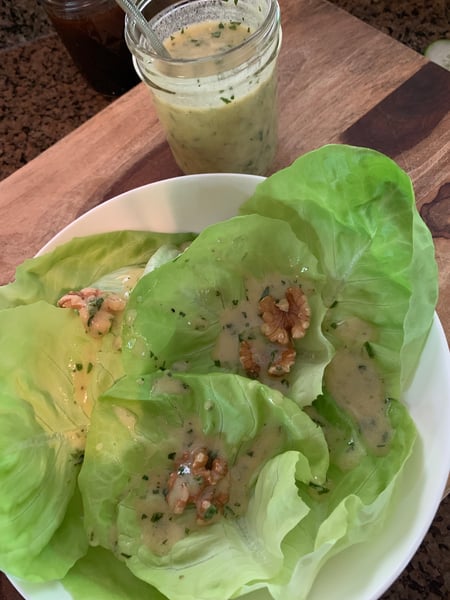
The salad was so simple it seemed impossible that it could be so memorable. It was mixed greens (a very new concept at the time) tossed in a mustard-tarragon vinaigrette. I didn’t really know what tarragon was, but what I did know was that it was the best dressing I had ever had – so much so that two years later when my parents were coming to visit me at college, they begged the chef to make me a jar of it and he did! Dorm salads never tasted so delicious.
But as time wore on and life got busy, I bought almost all of my salad dressing at the store. Over the years, I did try to upgrade the types of dressings I bought, but if it was a salad made at home, then most likely the dressing came out of a bottle. That all changed with culinary school, as I was able to finally re-create that magical concoction I’d first tasted in my teens. Now, there is nothing wrong with a bottled dressing, it's just that the longer I make my own, the easier it is, and the more I can customize the flavors to exactly what I want them to be.
There are endless types of salad dressing options out there, and the list just seems to keep growing as the desire to explore global cuisines and flavors ever expands. But for this post, I want to focus on the vinaigrette – and while its not technically one of the five “Mother Sauces”, there is growing discussion that it should be added to the list.
Over the years, I have learned a few techniques and tricks to making the most delicious homemade vinaigrette. The first and probably most important is the ratio of oil to vinegar. I’ve seen recipes vary from 2:1 all the way up to 4:1 of oil to vinegar, and as I have experimented, I conclude that a 2:1 – 3:1 ratio is the best. Any more oil and the dressing is just greasy, any less – too sour. I also find that a 2:1 ratio works best if you will be adding sweetness such as honey or maple syrup to help round out the astringency of the vinegar; or as in the recipes I will share below – you are using a naturally sweet vinegar such as balsamic, or adding mustard.
The second trick I have adopted is to be sure to add a generous pinch of salt and herbs to the vinegar, and whisk to dissolve before adding any oil. Salt does not dissolve in oil, and herbs bloom in water, so by adding these ingredients before the oil, you give them a chance to offer the best flavor.
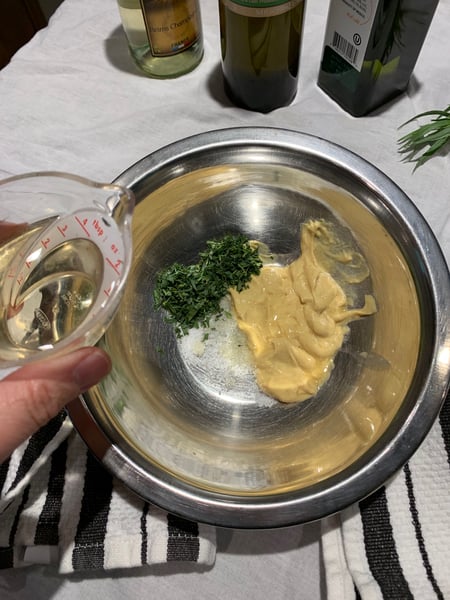
Once you have whisked it all together, you will taste again for seasoning and adjust accordingly, but remember – since salt does not dissolve in oil, you will need to wait a few minutes to let it find some vinegar and dissolve. Then re-whisk and taste again.
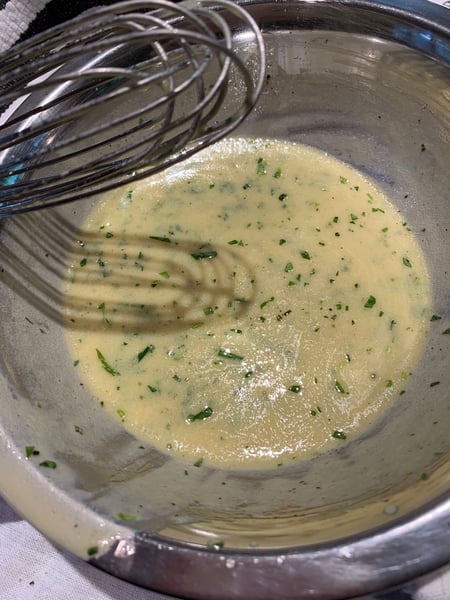
Mustard – Tarragon Vinaigrette
Yields ¾ cup
1/4 cup white wine or Champagne Vinegar
1/4 - 1/3 cup extra virgin olive oil, to taste
1/4 cup high quality flavorless oil (i.e. grape seed)
2 Tablespoons Dijon mustard
2 Tablespoons finely chopped tarragon
3/4 teaspoon kosher salt
Fresh cracked pepper to taste
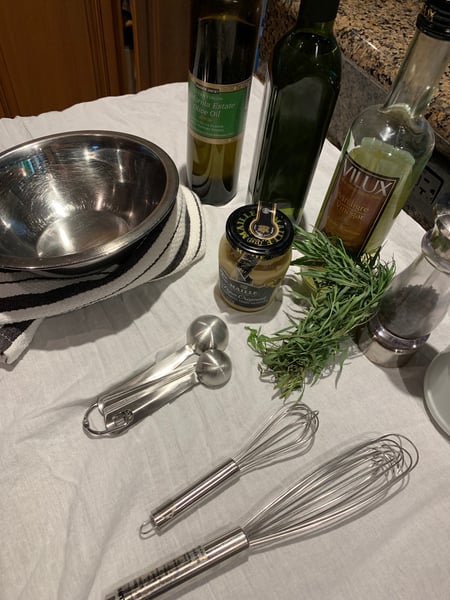
The mustard will act as an emulsifier for up to 6 hours, so you should only need to give it a quick shake before serving.
Balsamic Vinaigrette
Yields scant ¾ cup
1/4 cup Balsamic vinegar (+ 1 Tablespoon Cream of Balsamic – optional, just makes it a little thicker/sweeter)
1/4 -1/3 cup extra virgin olive oil, to taste
1/4 cup high quality flavorless oil (i.e. grape seed)
1/4 teaspoon onion powder
1/4 teaspoon granulated garlic
3/4 teaspoon kosher salt
Fresh cracked pepper to taste
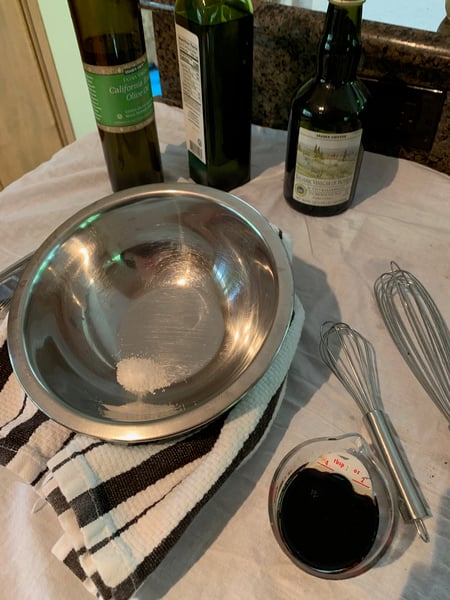
Some balsamic vinegars help to hold the dressing together for quite a few minutes, others will need to be re-whisked or shaken right before serving every time.
Both dressings should last 7-10 days in the fridge, and I personally store then in glass jelly jars with the white plastic top. Makes for easy shaking, measuring/portioning out of the jar, and just like soda pop or a beer – it just tastes better coming out of glass!
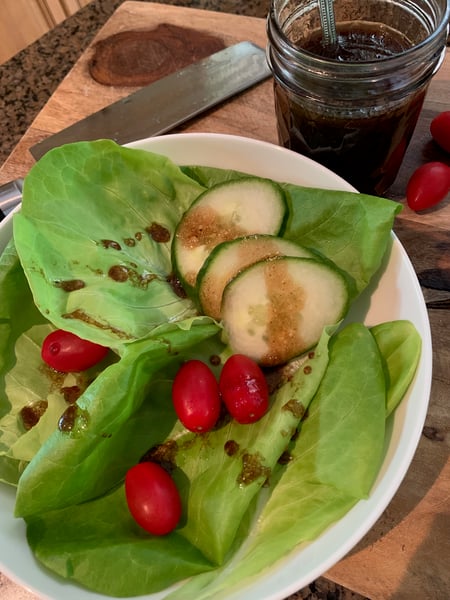
These vinaigrettes are the perfect way to dress up a summer salad, but they can also be used as marinades for chicken, pork, and even tofu – or as dipping sauces for grilled shrimp or a beef kebab. The possibilities are endless as your imagination!
To learn more about herbs, spices, oils and vinegars, don't miss The Chopping Block's Flavor Dynamics class coming up on Sunday, June 9 10am at Lincoln Square. You'll learn the art of tweaking the five basic tastes - Salty, Sweet, Bitter, Sour and Umami - and how to use herbs, spices, oils, vinegars and aromatic ingredients to create a rich tapestry of cuisine limited only by your imagination.

